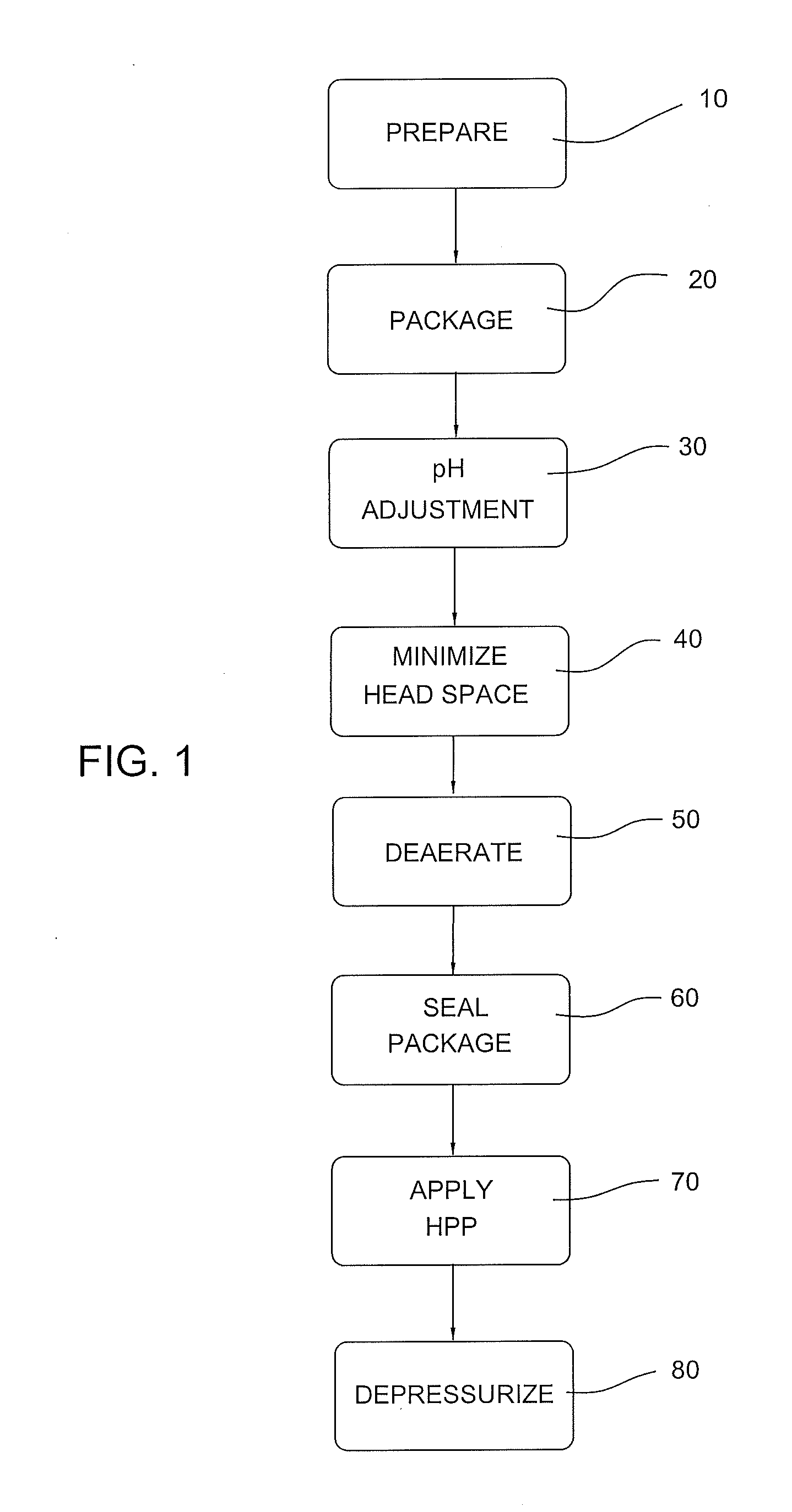Fruit and vegetable peservation process
- Summary
- Abstract
- Description
- Claims
- Application Information
AI Technical Summary
Benefits of technology
Problems solved by technology
Method used
Image
Examples
example 1
[0043]The food item for this example was celery. Celery was cleaned, and washed. The clean celery was cut into slices and weighed into 4 ounce containers. A brine solution was then added to the containers. The brine solution included water, salt, sugar, acid, and flavor, as set forth in the table below. Brine was added to the top of each container to minimize head space. The containers were then sealed under vacuum conditions and loaded into the chamber of an HPP unit. The HPP unit was operated at a pressure of 87,000 psi for 5 to 10 minutes at a temperature of 35° F. to 55° F. After depressurization, the containers were removed from the HPP chamber.
IngredientsWeight PercentBrine Water 41% Salt 1.5% Sugar 5.7% Vinegar, 50 grain 8.8%Celery 43%Total 100%
example 2
[0044]The food item was green bell peppers. Green bell peppers were cleaned, and washed. The clean bell peppers were cut into slices and weighed into 4 ounce containers. A brine solution was then added to the containers. The brine solution included water, salt, sugar, acid, and flavor, as set forth in the table below. Brine was added to the top of each container to minimize head space. The containers were then sealed under vacuum conditions, and loaded into the chamber of a HPP unit. The HPP unit was operated at a pressure of 87,000 psi for 5 to 10 minutes at a temperature of 35° F. to 55° F. After depressurization, the containers were removed from the HPP chamber.
IngredientsWeight PercentBrine Water40.5% Salt 1.3% Sugar 5.6% Vinegar, 50 grain 8.6%Green Bell Pepper 44%Total 100%
example 3
[0045]The food item was broccoli. The broccoli was cleaned, and washed. The clean broccoli was cut into broccoli florets and weighed into 4 ounce containers. A brine solution was then added to the containers. The brine solution included water, salt, sugar, acid, and flavor, as set forth in the table below. Brine was added to the top of each container to minimize head space. The containers were then sealed under vacuum conditions, and loaded into the chamber of a HPP unit. The HPP unit was operated at a pressure of 87,000 psi for 5 to 10 minutes at a temperature of 35° F. to 55° F. After depressurization, the containers were removed from the HPP chamber.
IngredientsWeight PercentBrine Water43.3% Salt 1.4% Sugar 6.0% Vinegar, 50 grain 9.3%Broccoli 40%Total 100%
PUM
 Login to View More
Login to View More Abstract
Description
Claims
Application Information
 Login to View More
Login to View More - R&D
- Intellectual Property
- Life Sciences
- Materials
- Tech Scout
- Unparalleled Data Quality
- Higher Quality Content
- 60% Fewer Hallucinations
Browse by: Latest US Patents, China's latest patents, Technical Efficacy Thesaurus, Application Domain, Technology Topic, Popular Technical Reports.
© 2025 PatSnap. All rights reserved.Legal|Privacy policy|Modern Slavery Act Transparency Statement|Sitemap|About US| Contact US: help@patsnap.com

